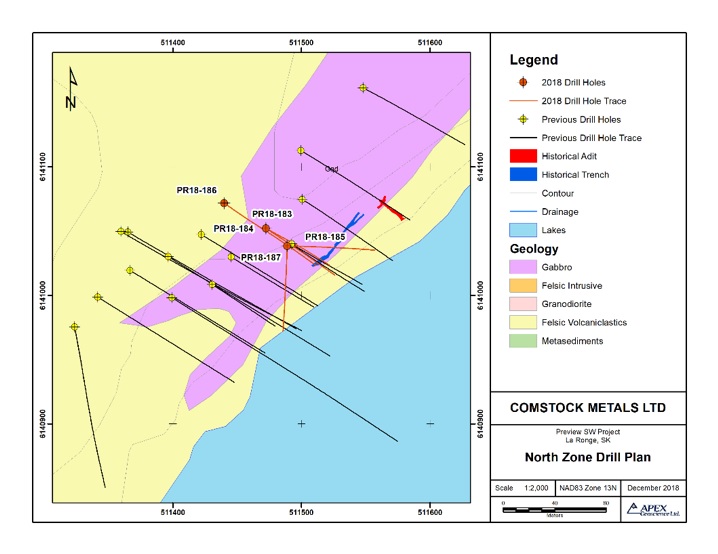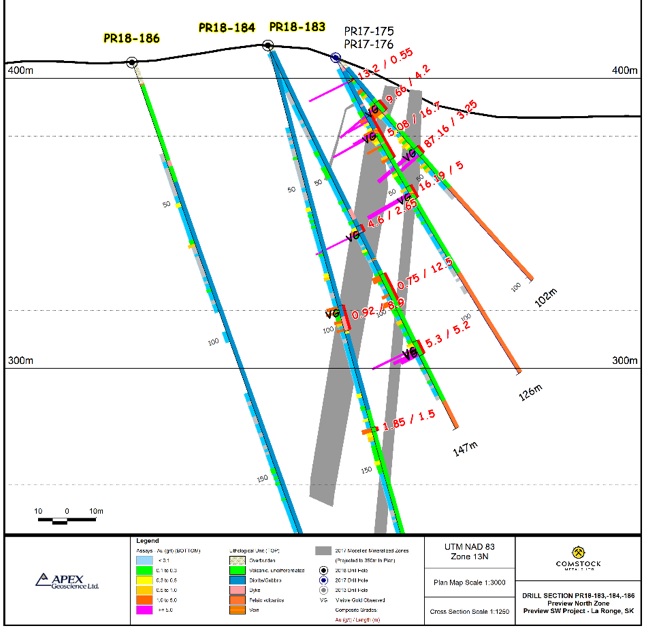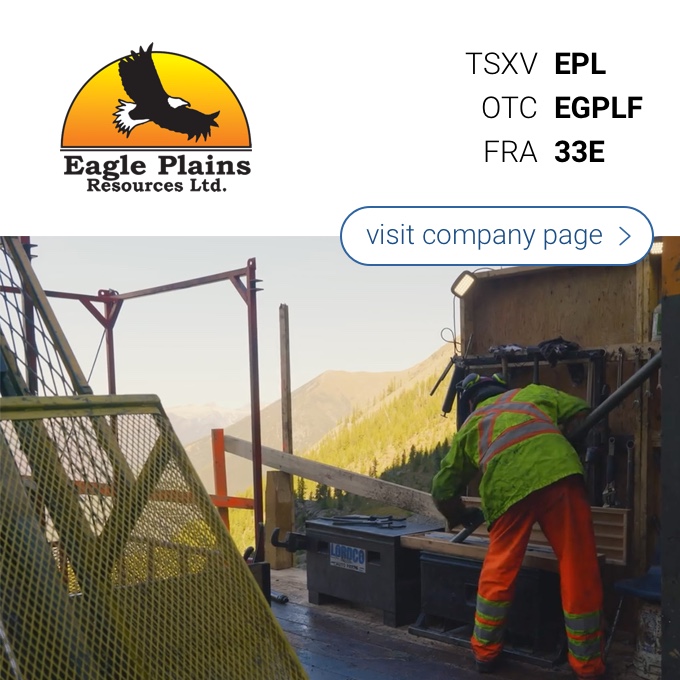
Comstock Metals (CSL.V) has just released the assay results from its 5-hole drill program on the Preview SW Gold project in Saskatchewan, which was completed in December last year. The company was targeting the North zone where it previously enjoyed positive exploration results, which made it an easy decision to go back to Preview North.
Four of the five holes contained gold mineralization, including some nice thick and high-grade intervals such as 8 meters at 7.47 g/t gold from 31 meters and 23.6 meters at 3.6 g/t gold from 50.4 meters downhole in hole 187, and 21.5 meters containing 2.87 g/t gold in hole 185. All assay results were characterized by some (very) high-grade intervals with the remainder of the mineralized interval having a lower average grade (which should still be economic). The headline result of 23.6 meters of 3.6 g/t gold contains a higher-grade interval of 2.1 meters containing 13.85 g/t gold, indicating the remaining 21.5 meters carried an average grade of 2.6 g/t (which is still very good for a shallow gold zone) while the 8 meters at 7.47 g/t gold contained an interval of 0.75 meters of 74.6 g/t gold. This indicates the remaining 7.25 meters of that interval contained an average grade of 0.53 g/t.

The grades are good, the intervals are relatively thick and the mineralization appears to be close to surface. Comstock’s next task will be to start building tonnage. Looking at the drill map, all holes were drilled close to each other, allowing Comstock to gain a better understanding of the geological structure at Preview North. Holes 183, 184 and 186 appeared to have been drilled to confirm the mineralization at depth. Holes 183 and 184 did successfully encounter the gold-bearing structures, but hole 186 came up empty. That’s a bit surprising as it indicates the mineralization appears to be limited at depth: it should have encountered a first layer of gold mineralization at a vertical depth of approximately 150 meters, but that didn’t happen, so now it’s up to the structural geologists to find an explanation.
On top of holes 183, 184 and 186 that were drilled underneath each other, Comstock also drilled holes 185 and 187 to test the extension of the mineralization towards respectively the east and the west. Both holes did intersect the main gold system, but as the gold intervals in both holes are just 50-60 meters away from each other, Comstock Metals undoubtedly plans to do some step-out drilling to figure out the total strike length of the mineralization. Using a currently known strike length of 60 meters, an average true width of the gold zones of about 15 meters (combining both layers) and modelling a depth of 120 meters, the total tonnage right now is approximately 300,000 tonnes, using a density of 2.85.
The thickness of the mineralization is good. The grades are good. The location of the gold system (close to surface) is also good. Now it’s up to Comstock to determine the extent of the gold-bearing system.
Go to Comstock’s website
The author has a long position in Comstock Metals. Comstock is a sponsor of the website. Please read the disclaimer

